Flóahreppur 作者: 来源: 发布时间:2021-06-15
一、所属省或是州,具体位置,人口,面积
Flóahreppur is a district in the eastern part of Flói. It is bounded by Árborg in the west, Skeiða- and Gnúpverjahreppur and Hvítá in the north, Þjórsá in the east and Atlantshafi in the south. This is the most populous municipality in the country without a settlement core.
The district came into being on June 10, 2006 when three districts merged; Hraungerðishrepp, Villingaholtshrepp and Gaulverjabæjarhreppur.
It has a total area of 291 square kilometers and is Iceland’s 46th largest municipality by area. In terms of population it is Iceland’s 40th largest municipality with a total population of 687, and a density of 2.36 people per square kilometer.
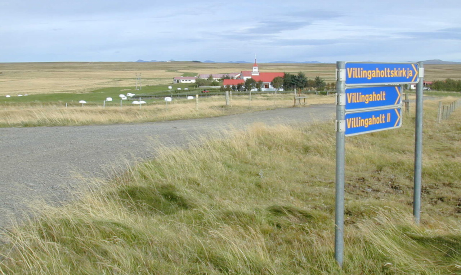
二、自然地理
1.地理条件
Flóahreppur is a beautiful and peaceful countryside in the south of Iceland that covers the eastern part of Flóinn and lies between the salmon fishing rivers Þjórsá and Hvítá. The area is historic and features diverse and beautiful nature, which is characterized by, among other things, diverse vegetation and abundant bird life. Flóahreppur consists of three districts, Hraungerðis-, Gaulverjabæjar- and Villingarholtshrepp. The municipality is 290 km² in size and 640 people live in the district. In Flóahreppur you will find the most panoramic views of settlements in the country. From Þjórsárveri, the mountain range is probably nowhere wider and wider in Iceland. To the north you can see Þórisjökull and in the south you face Vestmannaeyjar. To the west you can see all the way to Fagradalsfjall in Reykjanes and to Mýrdalsjökull in the east. In between is such a magnificent mountain view; Selvogsheiði, Skálafell, Ingólfsfjall, Búrfell, Kálfstindar, Hlöðufell, Hestfjall, Vörðufell, Hekla, Tindfjöll, Þríhyrningur, Eyjafjallajökull and Seljalandsmúli. Urriðafoss is in Flóahreppur in the mighty Þjórsá. The largest lava field in the world, the great Þjórsá lava field, lies beneath most of Flói, but it is the largest lava field that has flowed on earth in one eruption since the end of the ice age. The lava erupted in a large eruption east of Lake Þórisvatn about 8,700 years ago. The eruption fissure was 20-30 km large, but from it came an enormous amount of lava, or up to 30 km³. The lava flowed over Skeið, Flói and into the sea in front of Stokkseyri and Eyrarbakki, about 140 km from the volcanoes. The lava erupted in a large eruption east of Lake Þórisvatn about 8,700 years ago. The eruption fissure was 20-30 km large, but from it came an enormous amount of lava, or up to 30 km³. The lava flowed over Skeið, Flói and into the sea in front of Stokkseyri and Eyrarbakki, about 140 km from the volcanoes. The lava erupted in a large eruption east of Lake Þórisvatn about 8,700 years ago. The eruption fissure was 20-30 km large, but from it came an enormous amount of lava, or up to 30 km³. The lava flowed over Skeið, Flói and into the sea in front of Stokkseyri and Eyrarbakki, about 140 km from the volcanoes.
https://www.floahreppur.is/ferdathjonusta/saga-svaedisins/
2.交通情况
Flóahreppur is located about 50 kilometers Southwest of Reykjavik, and can be easily reached in 40 mins by car via the Highway 1.
https://www.south.is/en/inspiration/towns/floahreppur
三、经济发展和规模
The municipality's operating income during the year 2019 amounted to ISK 764.0 million. kr. in Parts A and B, of which Part A operating income amounted to ISK 743.2 million. kr. The tax rate was 14.52%, which was the statutory maximum in 2019. The property tax rate was 0.50% in category A, 1.32% in category B and 1.65% in category C, while the statutory maximum rate is 0.625%. in Class A, 1.32% in Class B and 1.65% in Class C.
The operating result of Parts A and B was positive by ISK 23.6 million. kr. but in Part A the operating result was positive by ISK 34.7 million. kr. The municipality's equity at the end of 2019 amounted to ISK 712.4 million. kr. according to the balance sheet, but the equity of Part A amounted to ISK 746.9 million. kr.
The current Covid-19 pandemic will have a significant impact on many areas around the world, including the economy. Significant uncertainty arises about the final effects of the epidemic, e.g. due to uncertainty about how long it will last and what the effect will be after it ends. It is now clear that the impact on the municipality's operations will be significant, e.g. due to lower tax revenues and other income, deferral of collection and increased expenses.
https://www.floahreppur.is/stjornsysla/fjarhagsaaetlanir-og-arsreikningar/
四、产业特点/重点项目
In the first half of 2020, a strategy was drawn up for the municipality based on the United Nations Global Goals for Sustainability.
Flóahreppur's vision is to be a desirable municipality for living where the economy is diverse and progressive and the infrastructure is good. We are a health-promoting, service-oriented and environmentally friendly community with a good image. Flóahreppur's values are: SUSTAINABILITY - FORESIGHT - COOPERATION.
The policy was prepared in collaboration with the local government committees and the residents of the municipality. Part of the municipality's strategy was to choose the values that should characterize the municipality's activities. Work continues on policy-making on the same basis and now focuses on educational issues. Data collected at meetings with staff, committees and residents. Emphasis is placed on hearing the voices of children and taking school policies into account.
https://www.floahreppur.is/2020/10/sjalfbaerni-framsyni-samvinna/
五、风景名胜,景点( attractions)
1. Hvítá (White River)
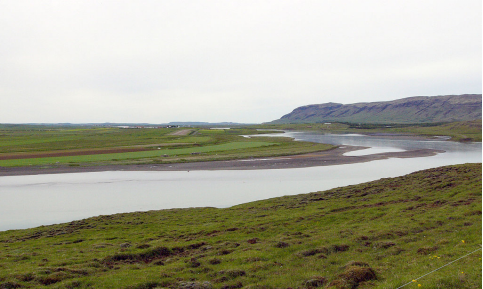
Hvítá (white river) is a river in Iceland that begins at the Hvítárvatn glacier lake on the Langjökull glacier in the highlands of Iceland at 64°37′N 19°50′W. The river flows for 40 kilometres (25 mi) before dropping down into a narrow gorge at the Gullfoss waterfall.
After this, the river flows between the Biskupstungur and Hrunamannahreppur districts. Here, the Hvítá combines with three other rivers: the Tungufljót, the Brúará, and the Stóra-Laxá, doubling the volume of the river. It proceeds to run through the flatlands near Grímsness and behind Ingólfsfjall mountain. Just north of the town of Selfoss it meets the Sog River where it becomes the Ölfusá as it flows into the Atlantic Ocean.
Because of the danger of flooding, especially in the winter, it has the reputation of being the most dangerous river in Iceland. Organised rafting excursions take place on parts of the river.
https://www.wikiwand.com/en/Hv%C3%ADt%C3%A1,_%C3%81rness%C3%BDsla
2. Hraungerðiskirkja
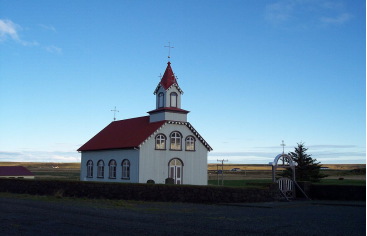
Hraungerðiskirkja is a Lutheran church in Flóahreppur, Iceland.
The church was designed by Eiríkur Gíslason from Bitra in Hraungerðishreppur and built in 1902. It stands on the site of another former church that dated back to 1200 CE. It is a wooden church with a red roof. On each side of the church are four windows, curved from the top with six-pane frames. Above the front door of the church are three windows. The church is clad in panel board with the chancel wall and the truss clad in flat slabs.
The church exterior was renovated, the tower rebuilt, concrete plastered, repairs to the frame and new windows installed as well as protective doors in 1993-97 under the supervision of Hjörleif Stefánsson.
https://www.wikiwand.com/en/Hraunger%C3%B0iskirkja
3. Íslenski bærinn (Iceland Turf House)
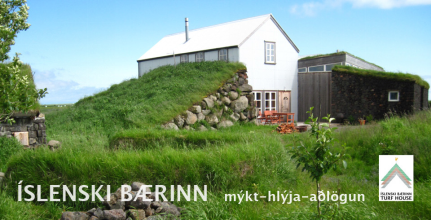
The Icelandic town nurtured the nation for centuries and was at the same time the cradle of domestic culture, at the same time beautiful, original and delicate in its natural softness. The cultural center Íslenski bærinn is a residential village, exhibition place, meeting place and playground that revolves around the Icelandic turf town and green architecture. There, guests will experience a unique local spirit, as well as view exhibitions that explain the context, development and variations of Icelandic turf farms with the aim of interpreting centuries-old and unique heritage into the contemporary with integration, scholarship, artistic approach and preservation of work culture.
The house is designed and built by Ósvaldur Knudsen, a filmmaker and master painter with great artistry and devotion in 1942. The building, which is a combination of a turf farm and a wooden house, stands firm in a domestic tradition but also stands out as a very conscious design with strong authorial characteristics. both to the house itself, the interior, the furniture and the surroundings. Laxabakki is the last link in the unbroken eleven hundred years of the construction history of the Icelandic turf town and the bathhouse there is the last Icelandic bathhouse that has been built according to a centuries-old tradition. The building is also in dialogue with various movements in contemporary architecture and design, including all interiors and furniture are specially designed and built for the house. Crafts, from wall loading, carpentry, carving (made by sculptor Ríkharður Jónsson),
http://islenskibaerinn.is/
六、历史文化
1.历史
The municipality of Flóahreppur was formed in the unification elections on February 11, 2006 when the residents of three districts, Hraungerðishreppur, Gaulverjabæjarhreppur and Villingaholtshreppur approved the merger. Previously, the primary schools and kindergartens of the three districts had merged into one primary school, Flóaskóli, which is located in Villingaholt, and one kindergarten, Krakkaborg, which is located in Þingborg.
Preparations were made well for the merging of the schools and kindergartens, which went well, thus avoiding various obstacles that often arise in the merging of municipalities when it comes to one of the most sensitive aspects of the operation of municipalities.
It was decided that the administrative seat would be in Þingborg, where an office was opened in July 2006 when the mayor was hired. The office works together with the mayor Eydís Þ. Indriðadóttir, two clerks, Hafdís Júlía Hannesdóttir in 80% of the job of accounting and payroll and Guðrún Elísa Gunnarsdóttir in 75% of the job who handles all general secretary / cashier jobs.
In the office, Brynjar's real estate manager Jón Stefánsson also has a 70% employment rate with facilities, as does Ingibjörg Einarsdóttir, a caretaker in Þingborg's social home and the Flóaskóli and Krakkaborg sports hall in 100% employment.
https://www.floahreppur.is/mannlif-og-menning/atvinnulif/
2. 文化体育
The cultural history of the Gulf has deep roots and includes well-known handicrafts and trade, from previous years. The area has historically been extremely rich in ingenious and skilled people, and significant inventions have come from here. Flóaáveitan can be mentioned there, but it was a great masterpiece in its time. Construction on it began in the spring of 1922 and will have covered over 12 thousand hectares of land. With its introduction, there was a great change in farming and business practices in the Gulf. Agriculture is the main industry in the municipality, but tourism is constantly growing. You can find various entertainment options and services such as accommodation, museums and handicraft houses, farm, tourist cottages, etc .. It is therefore safe to say that Flóahreppur is a vibrant community with a diverse human life that offers great entertainment, many events and gatherings, new traditions and rooted. Folklore lives on in place names and legends. One of the Icelandic sagas, Flóamanna saga, preserves the memory of the area, which is also a paradise for bird life and nature lovers.
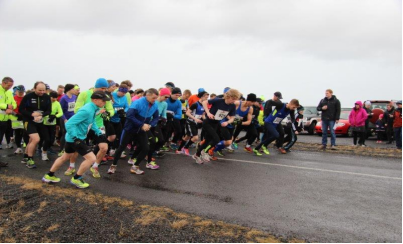
Flóahlaup Samhygðar, is part of the street and open-air race of Iceland and takes place in April every year. The distances are 3 km, 5 km and 10 km with time trial and prizes are awarded for the first three in each category. The race is a so-called Vorsæbæjarhringur from Félagslundur. The race has been held since 1979, but in the first years the race was held in the town square in Vorsabær and at Vorsabæjarhóll. It was from 1992 onwards that the number of participants increased and the race was moved to Félagslundur. Markhús Ívarsson from Vorsabæjarhóll is the originator of the race and it is often called " Markus ' Cake Run " because a splendid cake buffet is offered after the race in Félagslundur.
https://www.floahreppur.is/ferdathjonusta/
七、其他信息
Laugardælakirkja is a church at Laugardælar in Hraungerðishrepp. The church is concrete and a total of 300 square meters in area. It has a pipe organ and the pews can seat 70 people. Former world chess champion Bobby Fischer was quietly buried there in 2008.
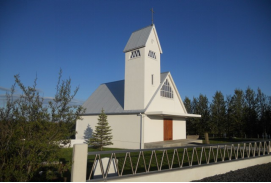
Bjarni Pálsson, construction representative in Selfoss, designed the church, but he also designed Selfosskirkja. Sigfús Kristinsson, master builder, was responsible for the construction of the church. Catholic churches at Laugardælar were dedicated to God, the Virgin Mary and St. Agata. The church belongs to Hraungerðisprestakalli.
http://www.kirkjukort.net/kirkjur/laugardaelakirkja_089.html
八、联系方式
Mayor: Eydís Þ. Indriðadóttir
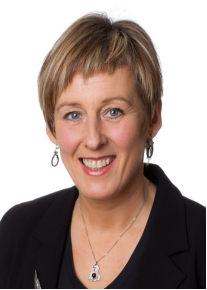
Telephone: 480-4370
Email: floahreppur@floahreppur.is
https://www.floahreppur.is/stjornsysla/
